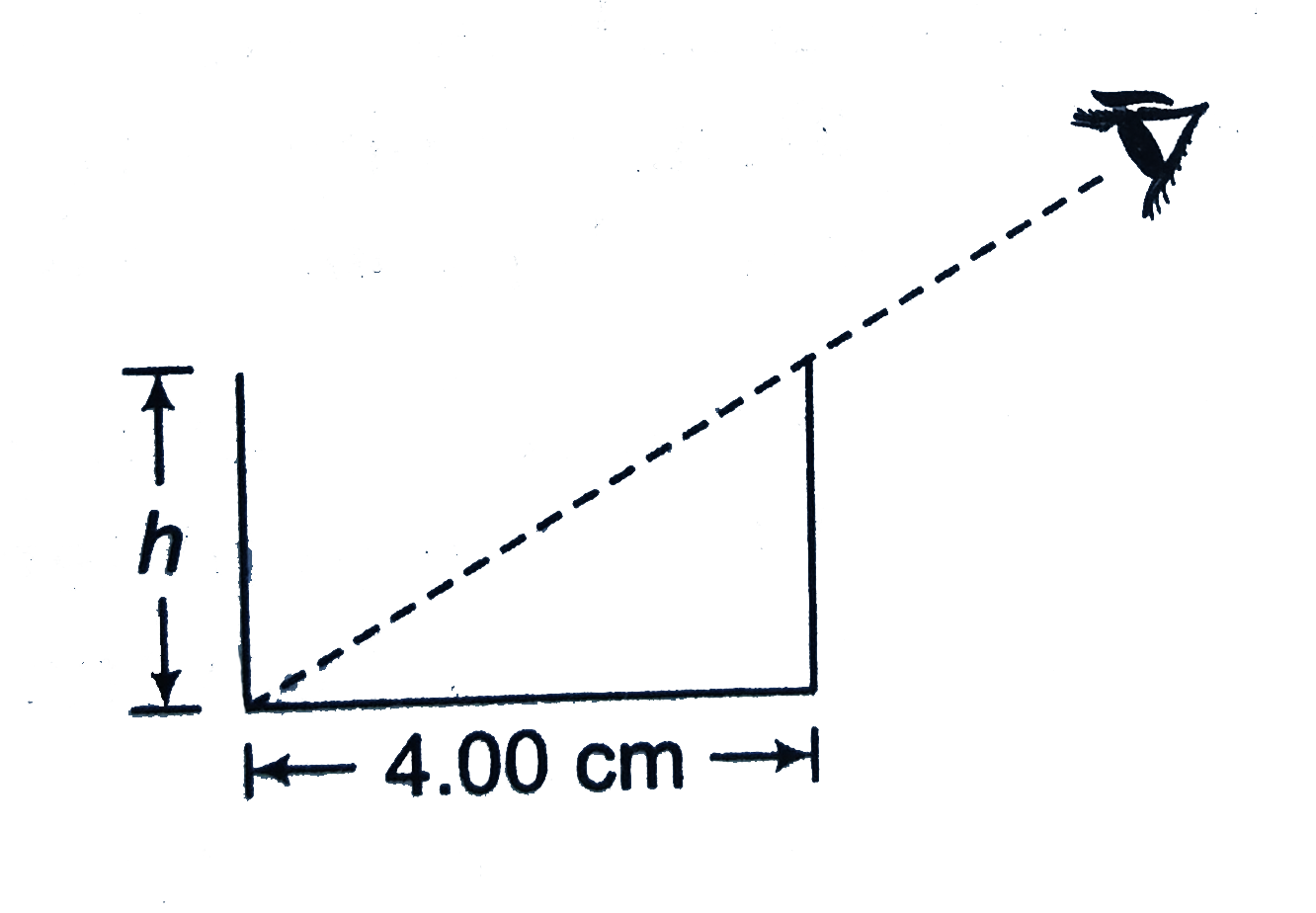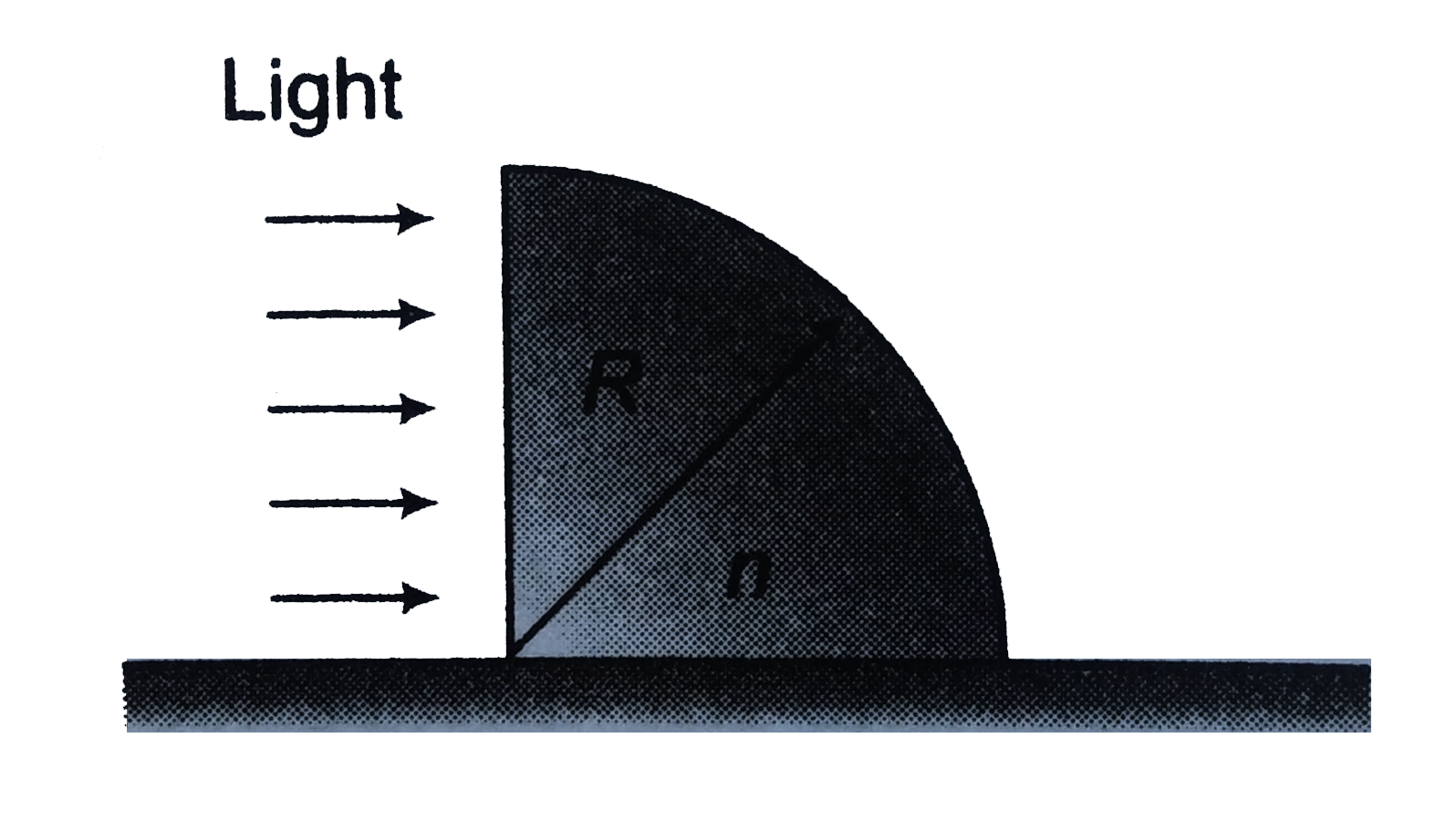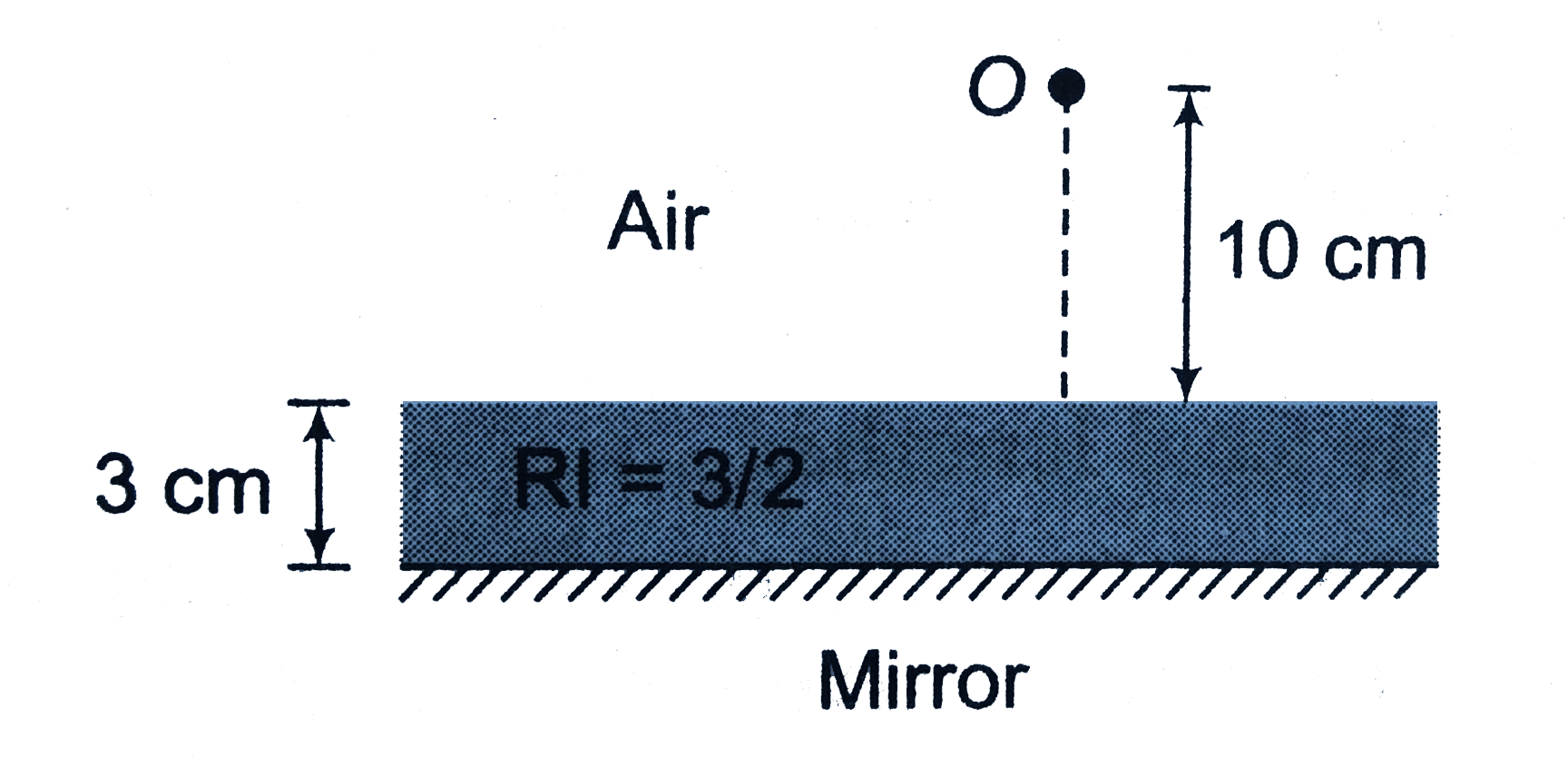Level 1 Subjective from DC PANDEY PHYSICS Chapter 21 REFRACTION OF LIGHT for Class 12
| Class 12 | PHYSICS |
| Chapter | REFRACTION OF LIGHT |
| DC PANDEY PHYSICS | Level 1 Subjective |
| Medium | English |
| Academic Year | 2023-2024 |
Question 1
The laws of reflection or refraction are the same for sound as for light. The index of refraction of a medium (for sound) is defind as the ratio of the speed of sound in air 343m/s to the speed of sound in the medium.
What is the index of refraction (for sound) of water (v=1498m/s)?
What is the critical angle θ, for total reflection of sound from water?View SolutionQuestion 3
A light beam of wavelength 600nm in air passes through film 1(n1=1.2) of thickness 1.0μm,then through film 2(air) of thickness 1.5μm, and finally through film 3(n3=1.8) of thick≠ss1.0mu m.
(a) Which film does the light cross in the least time, and what is that least time?
(b) What are the total number of wavelength (at any instant) across all three films together? View SolutionQuestion 8
A shallow glass dish is 4.00cm wide at the bottom as shown in figure. When an observer's eye is positioned as shown, the observer sees the edge of the bottom of the empty dish. When this dish is 4.00cm wide at the bottom as shown in figure. When an observer's eye is positioned as shown, the observer sees the edge of the empty dish. When this dish is filled with water, the observer sees the centre of the bottom of the dish. Find the height of dish μw=4/3.
 View Solution
View SolutionQuestion 9
A glass prism in the shape of a quarter cylinder lies on a horizontal table. A uniform, horizontal light beam falls on its vertical plane surface as shown in the figure. If the radius of the cylinder is R=5cm and the refractive index of the glass is n=1.5, where on the table beyond the cylinder, will a path of light be found?
 View Solution
View SolutionQuestion 11
A glass sphere has radius of 5.0cm and a refractive index of 1.6. A paperweight is constructed by slicing through the sphere on a plate that is 2.0cm from the centre of the sphere and perpendicular to radius of the sphere that passes through the centre of the circle formed by the intersection of the plane and the sphere. The paperweight is placed on a table and viewed from directly above an observer who is 8.0cm from the table top, as shown in figure. When viewed through the paperweight, how far away does the table top appear to the observer?View SolutionQuestion 14
Two glasses with refractive indices of 1.5and1.7 are used to make two indentical double convex lenses.
Find the ratio between their focal lengths.
How will each of these lenses act on a ray parallel to its optical axis if the lenses are submerged into a transparent liquid with a refractive index of 1.6?View SolutionQuestion 15
A converging beam of rays in incident on a diverging lens. Having passed through the lens the rays intersect at a point 15cm from the lens. If the lens is removed, the point where the rays meet, move 5cm closer to the mounting that holds the lens. Find the focal length of the lens. View SolutionQuestion 18
Determine the position of the image produced by an optical system consisting of a concave mirror with a focal length of 10cm and a convergent lens with a focal length of 20cm. The distance from the mirror to the lens is 30cm and from the lens to the object is 40cm. Consider only two steps. Plot the image.View SolutionQuestion 19
A parallel beam of rays is incident on a consisting pf three thin lenses with a common optical axis. The focal length of the lenses are equal to f1=+10cmandf2=−20cm,andf3=+9cm respectively. The distance between the first and the second lens is 15cm and between the second and the third is 5cm. Find the position of the point at which the beam converges when it leaves the system of lenses. View SolutionQuestion 21
A ray of light is incident on the left vertical face of glass cube of refractive index n2, as shown in figure. The plane of incidence is the plane of the page, and the cube is surrounded by liquid (refractive index=n1). What is the largest angle of incidence θ1 for which total internal reflection occurs at the top surfaces? View Solution
View SolutionQuestion 27
An achromatic lens-doublet is formed by placing in contact a convex lens of focal length 20cm and a concave lens of focal length 30cm. The dispersive power of the material of the convex lens is 0.8. Determine the dispersive power of the material of the concave lens. Calculate the focal length of the lens-doublet. View Solution
All Exercises from DC PANDEY PHYSICS Class 12 PHYSICS REFRACTION OF LIGHT
- Example
- Example Type 10
- Example Type 11
- Exercise 31.1
- Exercise 31.2
- Exercise 31.4
- Exercise 31.5
- Exercise 31.6
- Exercise 31.7
- Exercise 31.8
- Introductory exercise
- Level 1 Assertion And Reason
- Level 1 Objective
- Level 1 Subjective
- Level 2 Comprehension Based
- Level 2 More Than One Correct
- Level 2 Single Correct
- Level 2 Subjective
- Single Correct Option
- Solved Example
- Subjective Questions
- more than one correct option

